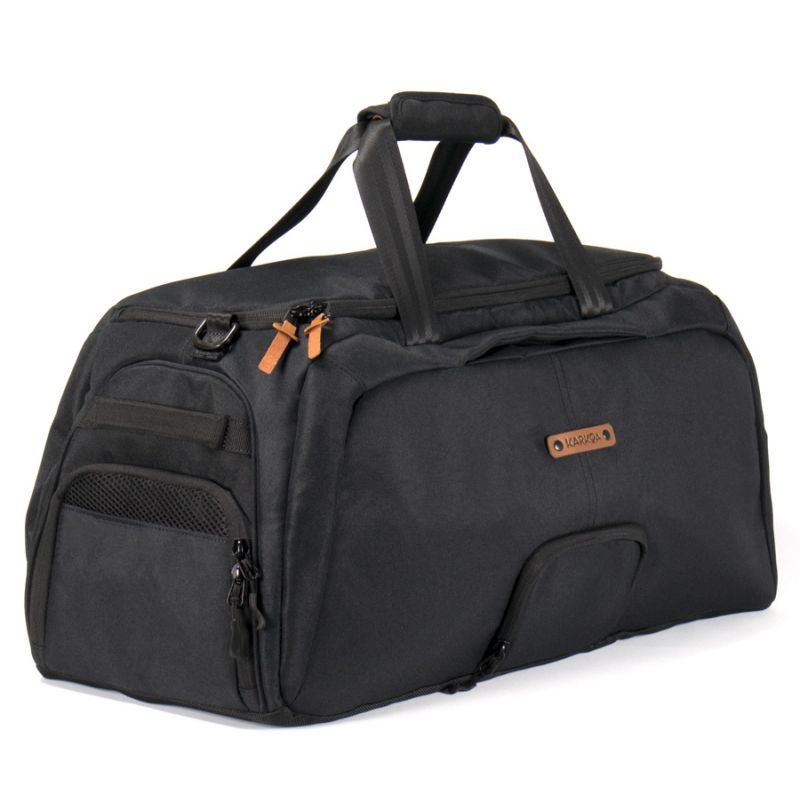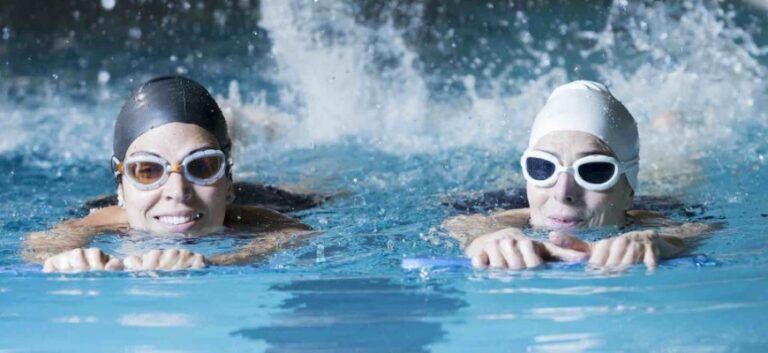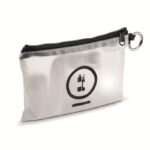Water is not our natural environment and we have to adapt to it. There’s no secret to being at ease in an aquatic environment – it’s all about training.
Why is training so important?
Water is not man’s natural environment, yet he has to adapt to it if he wants to perform well. It’s not in this event that you gain the most time. If you’re at 100% of your ability and fight for the whole distance, you generally only gain a few seconds to a few minutes for the best.
Going 100% for the swim distance means expending a lot of energy. So it’s counter-productive to get out of the water first if you’re going to be exhausted and have no energy left for the next two events. Because it’s in the cycling and running events that the gaps will widen the most.
The aim of swimming training for triathletes is to improve their technique. This will enable them to swim more efficiently, expend less energy and be in better shape to tackle subsequent events.
Choosing the right distance for your triathlon swimming session
Training for cycling or running generally means racking up the kilometres, working on your endurance and speed. Swimming is a bit different. It’s not the distance covered that counts most, but technique.
You can be powerful and have well-developed muscles, but that doesn’t mean you can swim efficiently. Once you’re in the water, it’s all about glide and technique. A good glide will enable you to move forward, reducing the resistance of the water and making the most of the propulsion provided by your arms and legs. Technique will enable you to move efficiently. Effort will be controlled for optimum results.
There’s no point in trying to swim fast during training. A slow to normal pace will be more appropriate, while concentrating on the strokes and technical aspects.
Improving your swimming technique for triathlons
Although the front crawl is the most popular stroke among triathletes, there’s nothing to stop you from competing in the breaststroke if you have a better level.
It’s important to concentrate your efforts on the stroke you do best. If you’re an average swimmer, in both crawl and breaststroke, it’s best to focus on the crawl. This stroke is faster and will require less energy for the same speed. As the aim is to cover a long distance without coming out of the swim exhausted, the crawl will be more suitable.
In front crawl, two things make the difference: breathing and the efficiency of your arm movements. The legs are there mainly to improve buoyancy and have virtually no role in propulsion.
Work on your breathing
To avoid getting out of the water completely out of breath during your triathlon, you need to learn to manage your effort and adapt your breathing.
Inhale through the mouth, exhale through the mouth and nose. Exhalation takes place underwater and must be active. During inspiration, when the face comes out of the water, the lungs must be empty. This will speed up inhalation and leave less CO2 in the body. Incomplete exhalation will gradually reduce the amount of air that can be breathed in and lead to breathlessness. Breathe slowly and continuously as long as your head is underwater, then finish emptying your lungs just before lifting your face out of the water. You need to be able to breathe on both sides. To do this, practise breathing every three strokes, alternating left and right inspiration. This makes it easier to adapt to swimming conditions in open water, where you may be hindered by other swimmers, have the sun in your eyes or encounter waves.
Improving arm work
It’s important not to concentrate your efforts on your legs. In the crawl, they are not used for propulsion, but only to maintain the body’s position in the water. What’s more, it’s best to preserve them during swimming, as they will be put under heavy strain during the cycling and running events.
The legs will only really be used in certain cases, to accelerate over a short distance and get out of reach of other swimmers, at the start or when passing a buoy for example. Accelerating the movement of the legs shortly before the finish will also increase blood flow to better prepare for the effort that will follow on the bike. But for the rest of the distance, it’s best to take it easy. Leg muscles are large and consume a lot of energy.
So you need to concentrate on working your arms. There’s no secret, you need to improve your swimming technique for a triathlon, and optimise your arm movements. To do this, certain swimming drills are the most suitable exercises.
But workouts should not be the whole of a training session. You should then do sets of front crawl, putting into practice the elements worked on during the drills.

How do you organise a swimming training session for a triathlon?
It’s important to organise a training session correctly if it’s to be profitable. It’s better to cover less distance and concentrate on the technique you’re working on.
Warming up
The swimming warm-up consists of gently warming up the muscles that will then be used during the exercises. Swim around 400 metres, alternating between the three strokes of crawl, backstroke and breaststroke. As these three strokes don’t use quite the same muscle groups, this exercise provides a complete warm-up.
Education
The different training methods described can be combined in the same workout. For greater effectiveness, alternate between an educational session, a rest period and normal swimming.
In practical terms, this could mean a session like this:
- Slide finger crawl (25 metres), rest 15 seconds, normal crawl (50 metres), slide finger crawl (25 metres).
- Shoulder to head crawl (25 metres), rest 15 seconds, normal crawl (50 metres), shoulder to head crawl (25 metres).
- Closed fist crawl (25 metres), rest 15 seconds, normal crawl (50 metres), closed fist crawl (25 metres).
- Whip crawl (25 metres), rest 15 seconds, normal crawl (50 metres), whip crawl (25 metres).
- Catch crawl (25 metres), rest 15 seconds, normal crawl (50 metres), catch crawl (25 metres).
It’s important to rest between each workout, which can be difficult. If you’re too tired, your movements won’t be precise enough and you’ll lose the benefit of the exercise. If an exercise is too difficult, you can also use an accessory such as a pull-buoy or plank to help you.
Split training
The split consists of alternating pools in fast swimming and pools in softer swimming.
Here is a possible split session:
- 8 x 50m crawl (including 25m fast then 25m soft)
- 50m crawl
- 50m double-arm backstroke
- 4 x 100m crawl (including 50m fast then 50m soft)
- 100m soft crawl
- 2 x 200m crawl (including 100m fast then 100m soft)
- 100m soft crawl
The recovery phase
This phase of calming down is very important, as it will allow your muscles to relax after having been particularly hard worked. These exercises are ideal for :
- Swim of your choice over 100 metres,
- Soft crawl over 50 metres,
- Backstroke with two arms and breaststroke legs for 50 metres.
The right bag for triathlon swimming training
Pour vos séances de natation triathlon, optez pour un sac de piscine Karkoa en fonction de vos besoins. Avec ses multipleWith its watertight compartments and pocket, you’ll be able to transporter votre équipement de natation et vos affaires de rechange.


















